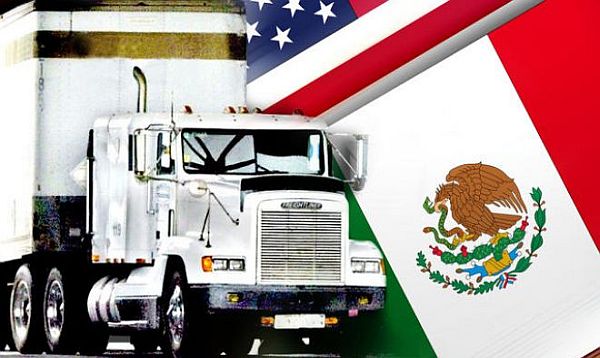As Congress debates immigration reform legislation, millions of tourists and billions of dollars continue to cross the US-Mexico border in both directions.
A study released in early May by NDN, a center-left think tank based in Washington, DC, shows trade and tourism between the two countries is at an all-time high.
Trade between the two nations in 2012 was estimated at $535 billion. That number is up from $300 billion in 2009, a number that’s projected to double by this year, said Simon Rosenberg, the president of NDN.
Texas leads all states with almost $200 billion in imports and exports with Mexico.
Trade with Mexico sustains almost 6 million US jobs, the NDN study said. In the Rio Grande Valley, tourists provide the biggest Mexican boost to the economy.
"We really rely heavily on the Mexican market," said Nancy Millar, director of the McAllen Chamber of Commerce’s Convention and Visitors Bureau.
The economic downturn in 2008 — which coincided with a spike in cartel violence — hurt Mexican tourism to the Valley, Millar said. Prior to those phenomena, 35 percent of income to McAllen’s tourism industry came from Mexico, she said, and it remains a vital part of McAllen’s economy.
"There’s no doubt we have a much stronger economy than we would without them — 35 percent stronger," she said.
The NDN report called on lawmakers to use the immigration reform bill to increase the number of ports of entry and staffing of Customs and Border Protection officers at the border to expedite travel from Mexico to the US.
"The customs department of the Department of Homeland Security is going to have to grow with trade and legal tourism," Rosenberg said. "We’ve got to invest more in border infrastructure. We’ve got to cut down on wait times."
Doing so would also help eliminate barriers to further trade between the two countries, said Shannon O’Neil, a senior policy fellow for Latin American studies at the Council on Foreign Relations. And further trade means growing economies on both sides of border, particularly in areas near the border.
"When a Ford plant opens in Mexico, it increases employment in the US," O’Neil said. "That is because manufacturing companies take advantage of the free-trade laws that allow easy passage between North American nations to produce different parts in different places for the same finished product."
"Up to 40 percent of a product that’s ‘made in Mexico’ actually comes from here originally," she said. "That’s a departure from 10 to 20 years ago when most Mexican exports to the US were natural resources like gas," she added.
Reducing waiting times for Mexican tourists to enter the US is only one part of a formula to improve trade. Border violence has to be reduced.
"What’s been interesting is you’ve seen economic growth in Mexico even as security has worsened," O’Neil said. But she doesn’t see that trend continuing.
"In the long term, I don’t see how prosperity and growth that people hope for can continue if you can’t guarantee safety," she said. "Economic growth and security have to go hand in hand."
Rosenberg believes economic growth can help bring security.
"Improving the economy on both sides of the border has to be seen as part of the strategy to weaken transnational criminal organizations," he said. "One of the ways to attack the cartels is to show that Mexicans have good jobs."
"That the trade relationship has flourished in a period of heightened security risks shows just how resilient and deep and broad this all is," Rosenberg said.
"And it shows that if the security situation improves, my God, what is going to be possible?"


